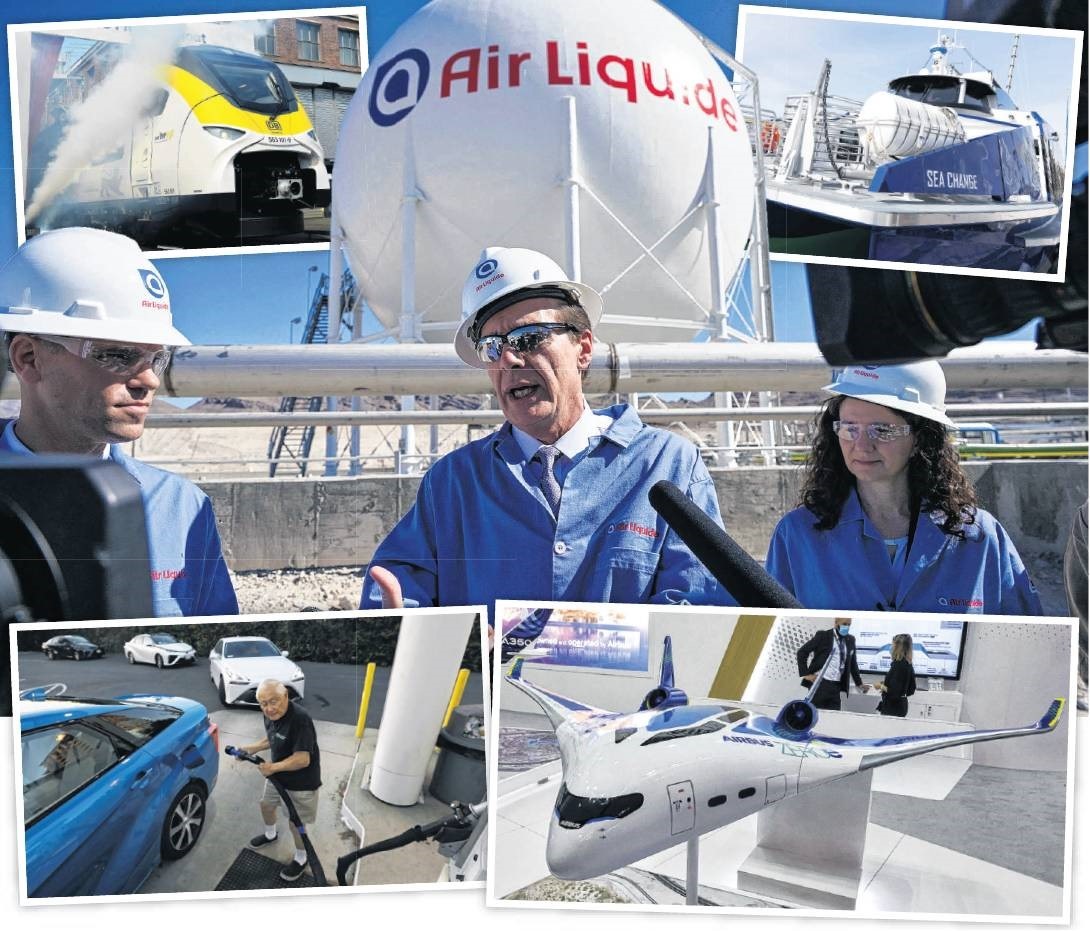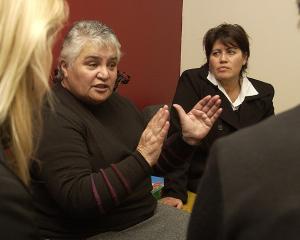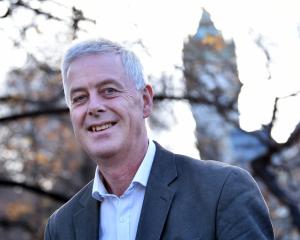
It is untrue to say Andrew Sutherland is merely fond of his electric car.
"It’s exhilarating," the semi-retired Dunedin landlord says with a grin from behind the steering wheel of his 2018, all-electric SUV.
"The little ‘petrol head’ in me ... every time I put the wally down, away it goes like a rocket.
"And it’s silent, with this beautiful, seamless power."
Not to mention the low running costs.
Preferring to drive, rather than be responsible for an aircraft’s carbon footprint, Sutherland has twice made family visits to Auckland in his electric vehicle (EV). Given the Hyundai’s 450km range, he is always able to find (increasingly common) EV charging stations. The cost of each 3000km return trip, about $120, compared with upwards of $900 in fuel costs for what Sutherland describes as an "Ice"(Internal combustion engine) vehicle.
And then there is that other reason - "The gathering storm of climate and environmental damage".
"It is just getting so disturbing," Sutherland says.
"I’ve got three beautiful children, I’ve got a partner. I love my sport, I’m very outdoorsy ... I do all these things in the environment and I just see it all starting to deteriorate.
"So, instead of getting depressed and sitting in a foetal position in the corner of my luxurious, capitalist mansion, I have started to become quite a strong activist.
"I’m trying, in a very small way, to make changes; to shake the cage of the system and say ‘Wake up guys, we’re doing so much damage here’."
A fortnight ago, the United States (US) summer began with a scorching heat wave. Last week, temperatures of 40-43degC were common from Spain to Germany. This week, Japan sweltered through its first 40degC June day on record.

"Studies are showing they are between 10 and 100 times more likely in today’s world than in a world without climate change," the New Zealand Climate Change Research Institute scientist announced this week, causing headlines around the world.
Marine heatwaves are changing more quickly than land-based ones, Dr Harrington says.
It is warmer seas that probably account for the hundreds of korora, little blue penguins, that have recently washed up, starved to death, on Northland beaches.
"When the sea temperature is warm ... the whole food chain is impacted, meaning fewer fish and less food for the penguins," penguin biologist Dr John Cockrem was reported saying.
The South is not untouched. In recent months, lower South Island waters have been in the grip of an extreme ocean heatwave. As a result, the bleaching that has struck Australia’s Great Barrier Reef has now blighted coral in Fiordland’s Breaksea Sound.
The "alarming" bleaching appears to have happened quickly and could be widespread, marine biologist James Bell was reported saying.
Bleaching has also been spotted in Doubtful Sound.
From the US to Fiordland, it is all part of the climate change scenario scientists have been predicting for decades.
They now warn greenhouse gas emissions need to be halved by 2030, in order to keep global average temperatures from rising by more than 1.5degC compared with pre-industrial levels.
An increase of more than 1.5degC would mean a world of increasing heat waves, droughts, storms, ocean acidification, floods, crop failures, climate refugees, social disorder, inter-state conflict ...
Since 1990, global emissions have not declined; they have risen by more than 40%. In New Zealand gross emissions have risen 21%.
Currently, we are on target for a cataclysmic 4.5degC of warming by the end of the century.
And now, we only have eight years left.
Or, as Climate Change Commissioner Dr Rod Carr puts it, "For decades, Aotearoa New Zealand failed to bring down its emissions ... The more we wait, the more the impacts of climate change, and the costs of our inaction, will compound and cascade ... it is now or never."
It is in this context that green hydrogen is garnering publicity and excitement, here and globally.
Green hydrogen uses renewable energy such as hydro, solar and wind to split water into hydrogen and oxygen. The hydrogen is then used as a fuel; its only emission, planet-friendly water.
Hydrogen is being touted as the clean fuel of the future, enabling countries to decarbonise their transport and heat process sectors.
Last week, it was revealed plans were progressing favourably towards building the world’s largest green hydrogen plant in Southland, using renewable energy from Tiwai Point. The project is being developed by Southern Green Hydrogen, a joint venture between Meridian Energy and Contact Energy. If it proceeds, the plant will likely be operational by 2027.

Across the ditch, the Australian government and fuel multinational BP are key players in a $40 billion, 80sq km, solar-and-wind power plant generating hydrogen and ammonia for export.
It is one of 14 major green hydrogen projects worldwide that are being built, with more in the pipeline.
Proponents, including the Green Hydrogen Catapault Initiative, a grouping of the seven largest green hydrogen developers, say scaling up green hydrogen will be essential to limiting global temperature rises to 1.5degC.
Rubbish, Prof Susan Krumdieck says. And dangerous rubbish at that, she adds.

Hydrogen, Prof Krumdieck says, has "nothing whatsoever to do with" addressing the urgent need to tackle climate change before we cross the 1.5degC threshold.
"Hydrogen is the least preferred option amongst the hundreds of options for re-engineering and innovation."
In calling green hydrogen a red herring, she is joined by a growing group of energy researchers including Assoc Prof Robin Smit of Sydney’s University of Technology, Prof Jenny Nelson, of London’s Imperial College, and Dr Tom Brown, of Karlsruhe Institute of Technology, Germany.
One criticism is that most current hydrogen production is not green; it relies on fossil fuels.
But even as green hydrogen ramps up, it is “more economical” to source as much electricity from renewables as possible before turning to green hydrogen, Dr Brown was reported saying.
"[Hydrogen] needs to be generated, compressed or liquefied, transported and converted back into useful energy - and each step of the process incurs a substantial energy loss," Prof Smit says.
Part of that inefficiency is because electricity is needed to produce green hydrogen in the first place.
“It will require approximately 2.5 times as much electricity to run the same vehicle with renewable hydrogen and fuel cells as it would with batteries," Prof Nelson was reported saying.
Trying to power New Zealand’s transport fleet with hydrogen would take an enormous amount of new renewable electricity, Prof Krumdieck adds.
“With hydrogen, we would need four more South Islands ... to do exactly the same thing we’re doing right now.”
There will be a place for green hydrogen in a 2050 net-zero carbon future. But it will be limited to hard-to-electrify gaps in the economy like long-distance transport and heat processes such as steel production.
The most pressing criticism of hydrogen, however, is that we cannot wait for green hydrogen technology and production to catch up. The scale and speed of the climate change transition now needed is too urgent. The tools to hand are the ones that must do the job.
Prof Krumdieck has written to Energy Minister Megan Woods to say as much; urging the government to stop funding hydrogen.
"Let’s get on with the stuff that we really can do that will really make our economy work."
The Weekend Mix put questions to Minister Shaw’s office about climate change mitigation plans, in particular pertaining to hydrogen.
The Minister was sick. Eventually, responses came from Minister Woods’ office.
Her office says hydrogen "may have a role ... as a form of large energy storage, fuel for heavy transport, aviation or shipping, and for decarbonizing industry".
The reply did not say whether the Government acknowledged green hydrogen had little to offer the urgent task of halving emissions.
Hydrogen, in Prof Krumdieck’s estimation, "has become a mass hysteria event".

"The question is, though, will they be laughing at all the time and money that was squandered or will it be a big part of the tragedy?"
If not with hydrogen, how then do we halve emissions in the next 96 months?
Hydrogen directs attention towards transport, but it is impossible not to at least mention the udder-shaped elephant in the room, agriculture.
Half of New Zealand’s CO2-equivalent emissions come from rearing animals and growing crops. The bulk of it is methane from ruminants - cattle, sheep, deer.
In the atmosphere, methane is nowhere near as long lasting as carbon dioxide. But during the 12 years it hangs around, it is a much more potent greenhouse gas, with a much higher heat-trapping ability. Agriculture’s role, between now and 2030, cannot be ignored.
He Waka Eke Noa, a farmers and growers climate action group, has put an agriculture emissions reduction proposal to the Government. The proposal would use a pricing mechanism "incentivising farmers and growers to take action".
Massey University emeritus Prof Ralph Sims specialises in sustainable energy and climate mitigation, with a strong focus on agriculture.
Prof Sims estimates the farmers’ proposal would reduce emissions by 5% to 6% by 2030.
"That’s nowhere near enough," he says.
The only obvious answer, Prof Sims says, is to "reduce livestock numbers" and "move away from animal protein, particularly ruminants".
Plentiful renewable energy - hydro, solar, wind - is New Zealand’s trump card.
We have drifted backwards slightly during the past four years, and now sit at 81% renewable electricity generation. But Minister Woods says there is a lot of new renewable generation on its way.
Transpower, which owns and operates the national grid on behalf of New Zealanders, estimates new generation will provide another 16.5TWh of electricity per year by 2030.
That would be more than enough to electrify half the nation’s cars, vans, light trucks and process heat, which Transpower puts at 12.6TWh per year.
Based on Ministry for the Environment figures, The Weekend Mix estimates it could reduce emissions by about 16%.

A simple way to get more people into electric cars would be to change the rules so car manufacturers want to sell more EVs, Australian economist Peter Martin says.
Martin has suggested his country follow the lead of the European Union, the United States and half a dozen other countries that have introduced "performance standards" which average emissions across what is sold by each vehicle manufacturer’s entire range.
"In the first year of the new European standard, average emissions from new passenger cars registered in Europe fell 12%. The share of electric cars tripled," Martin says.
He says Australia - and by extension New Zealand - could see similar results if it follows suit.
It would be a good step. But those doing the sums say a lot more is needed than simply electrifying our cars and carrying on as normal if we are to turn this waka on a dollar, as we now need to do.
The starting place, says Prof Krumdieck, is owning that the planet needs to cut fossil fuel use by 80% over the next eight years. That would take us back to fossil fuel consumption levels of the 1960s.
"That can’t avert the disasters already locked in by past fossil carbon extraction, but it would give a chance to the kids striking for climate to be able to cope and adapt."
Having made that decision, we then need to reorganise our world and our lives according to that new reality.
She suggests focusing national resources on building, or rebuilding, energy efficient homes; remodelling towns and cities around lower, more efficient energy use; and, developing new kinds of markets and new ways of distributing goods.
“We could be paying our own people to make bicycles and trams and trains, and running them off our own electricity."
Is it possible? Of course it is, Prof Krumdieck says.
"Re-developing everything systems-wide to adapt to 20% of current fuel availability is do-able. Transition Engineering all systems to function with 80% less fuel means resetting and innovating; problem solving to fit within constraints.
"That is just work. It is doable everywhere that it is taken on as the actual problem to solve."
Sutherland would love to see that sort of thinking adopted widely in New Zealand’s deep south.
And it needs to happen now, he says.
"We have not got time to wait for anything.
"As a planet, we literally cannot afford to be living this sort of [fossil fuel] lifestyle we’re living."
It drives his actions, from vehicle, energy and food choices to climate activism.
And, despite Sutherland’s despair, he sees small signs of hope.
"It allows me to ... turn it into actions that are exhilarating and empowering.
"I do find it is a really courageous group of people I am amongst."











